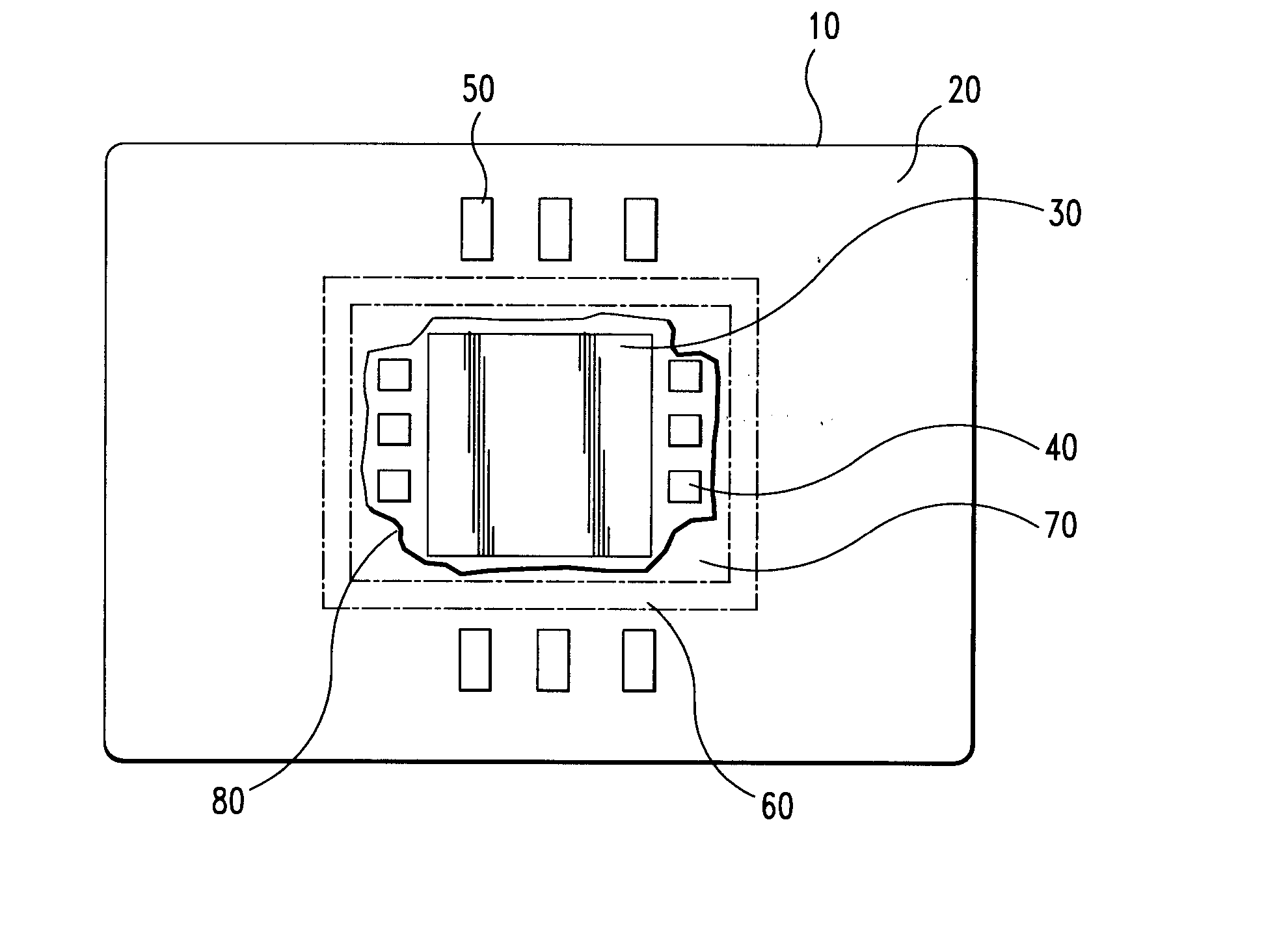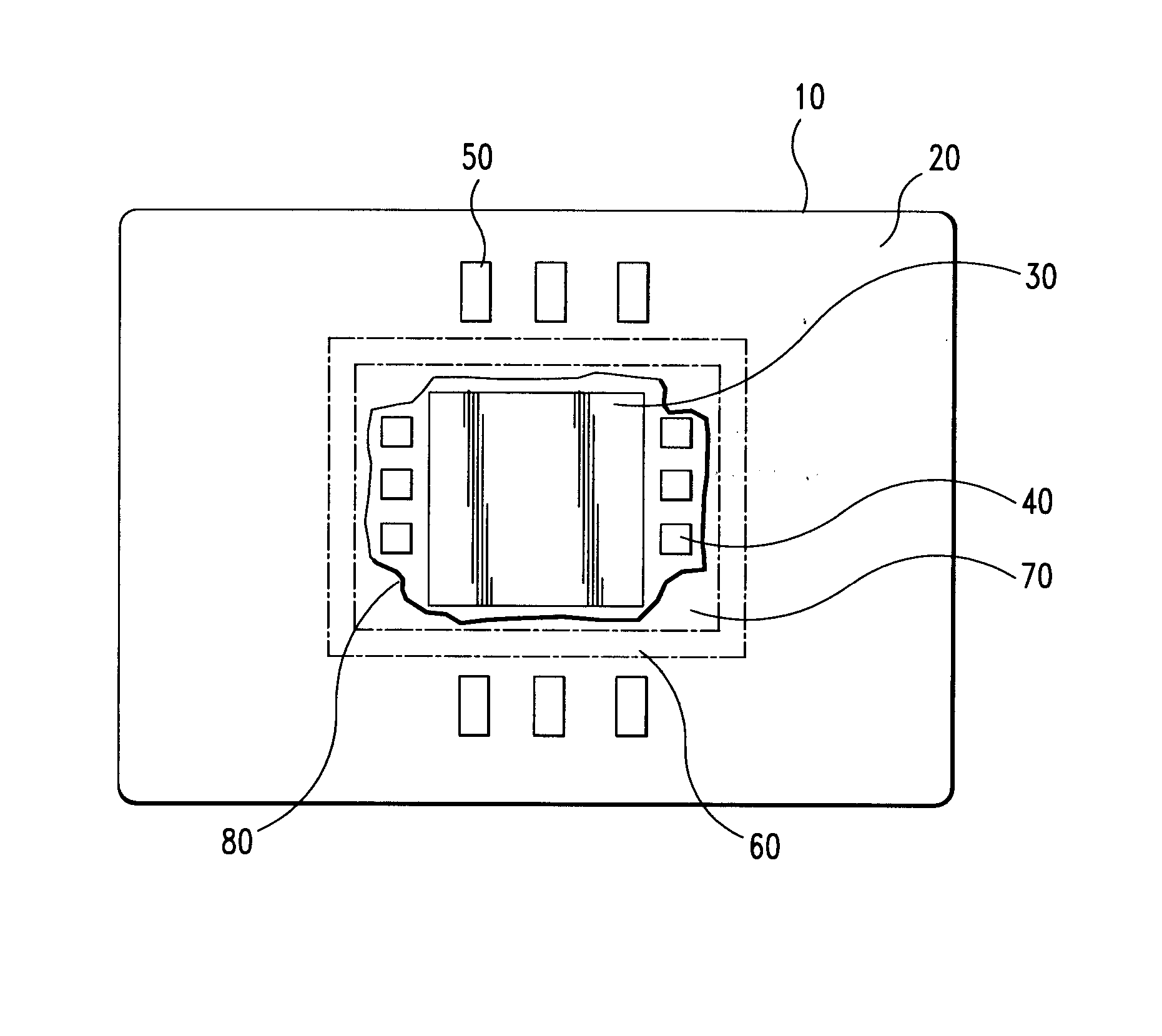Surface treatments for underfill control
a surface treatment and control technology, applied in the direction of semiconductor devices, electrical equipment, basic electric elements, etc., can solve the problems of reducing the overall module life or seriously degrading performance, bleedout of underfill, and failure of solvent fatigue, so as to reduce or eliminate the bleedout of underfill material and reduce wettability
- Summary
- Abstract
- Description
- Claims
- Application Information
AI Technical Summary
Benefits of technology
Problems solved by technology
Method used
Image
Examples
Embodiment Construction
[0017] The purposes of the present invention have been achieved by providing methods of treating a chip carrier ceramic surface to change the wetting characteristics of the surface. The underfill will be less wettable to the treated surface, and this will reduce the bleed out of the underfill and prevent or mitigate the flow of the underfill encapsulation into undesired areas such as underneath the surface mount components. Preferred methods of treating the surface include media blasting or chemical exposure.
[0018] Referring to FIG. 1 there is shown a ceramic chip carrier substrate 10 having a top surface 20 to which a semiconductor chip 30, capacitors 40 and surface mount IDC components 50. There is an area 60 depicted where the surface is intentionally treated by media blasting, grit blasting, or chemical means, to prevent underfill bleed out. The surface treatment creates two regions on the top surface 20. One is the region 70 where the semiconductor chip and C4 capacitors are a...
PUM
 Login to View More
Login to View More Abstract
Description
Claims
Application Information
 Login to View More
Login to View More - R&D Engineer
- R&D Manager
- IP Professional
- Industry Leading Data Capabilities
- Powerful AI technology
- Patent DNA Extraction
Browse by: Latest US Patents, China's latest patents, Technical Efficacy Thesaurus, Application Domain, Technology Topic, Popular Technical Reports.
© 2024 PatSnap. All rights reserved.Legal|Privacy policy|Modern Slavery Act Transparency Statement|Sitemap|About US| Contact US: help@patsnap.com









